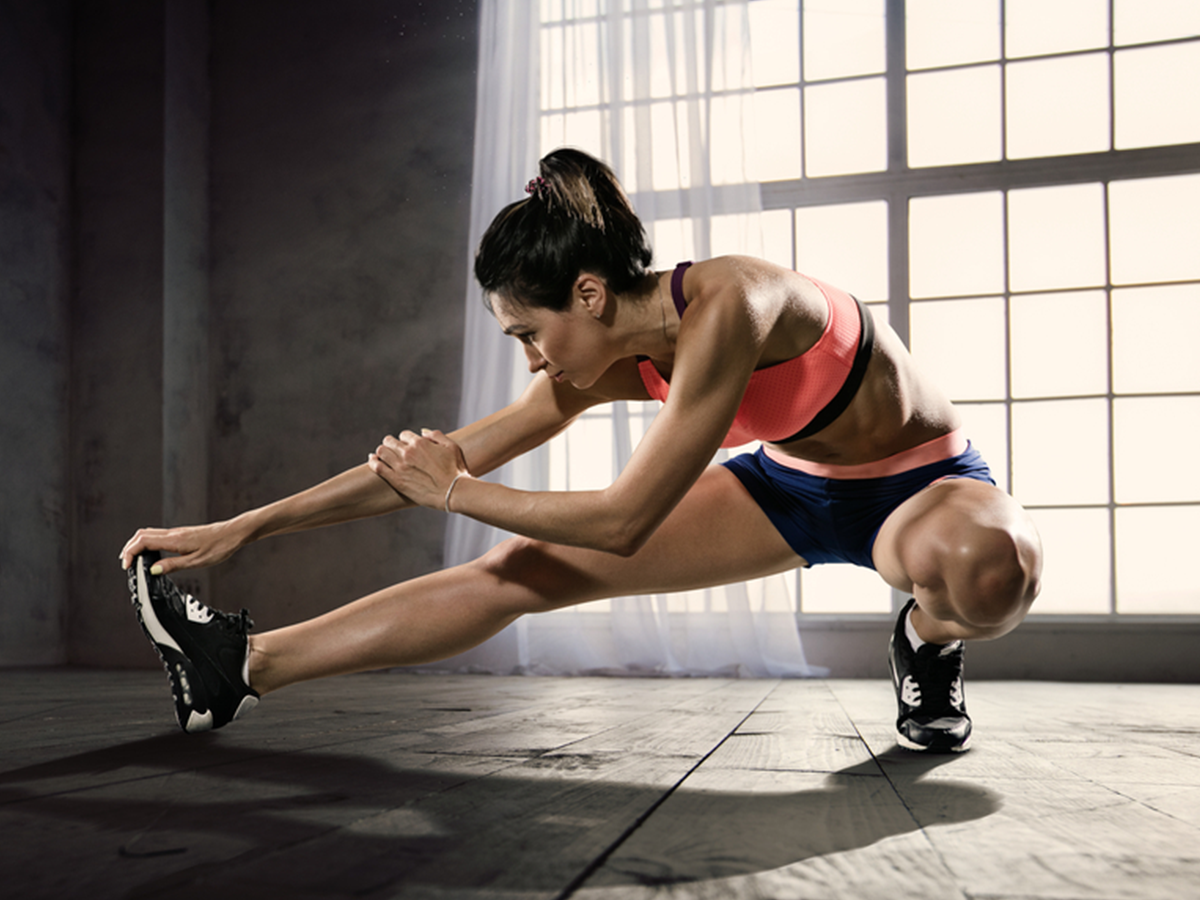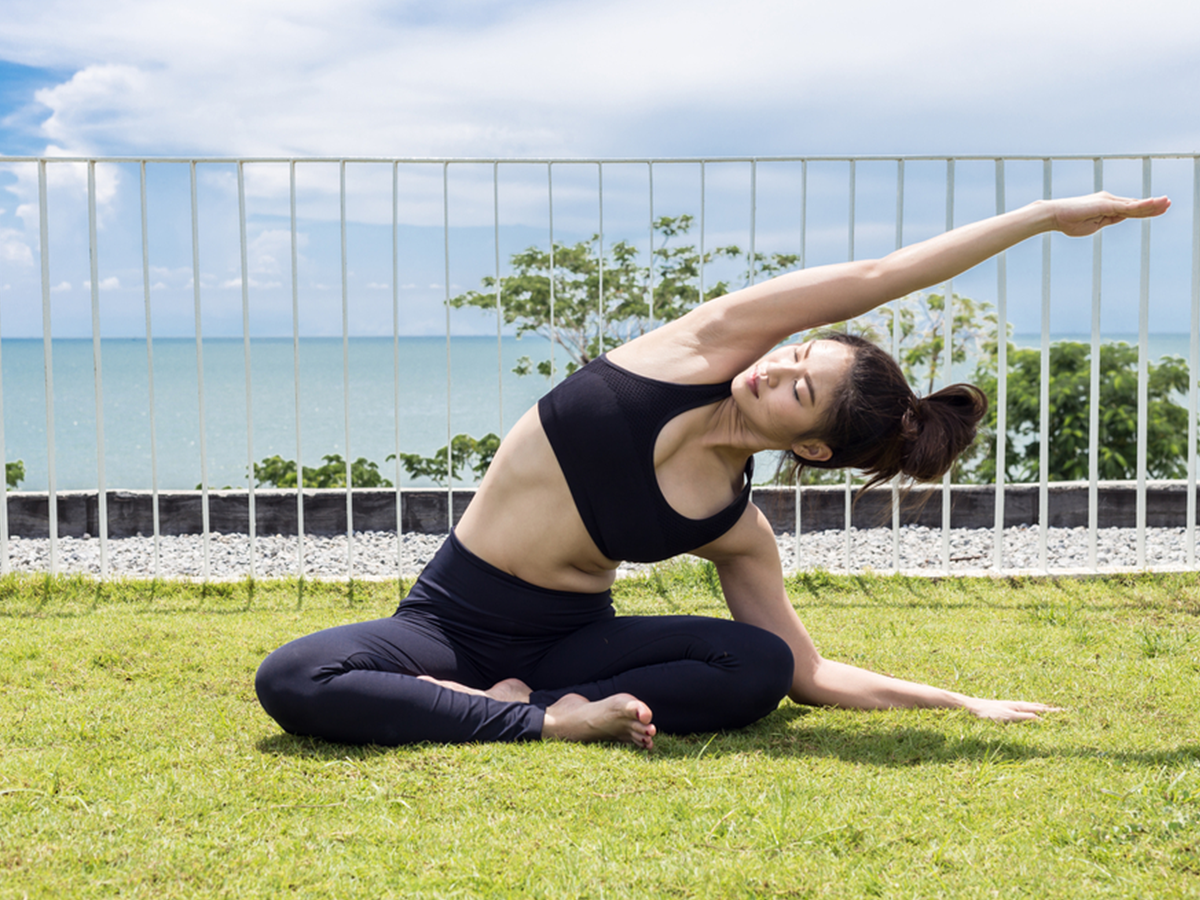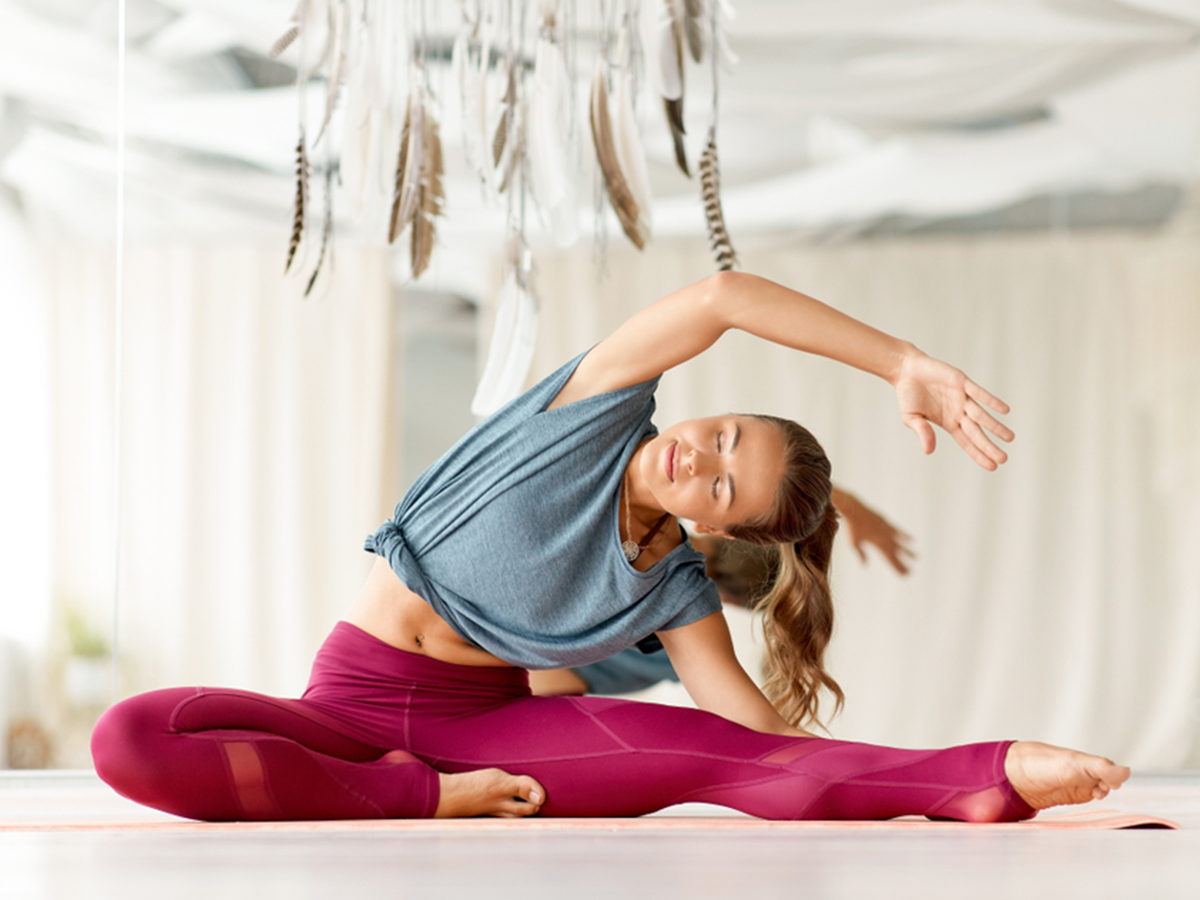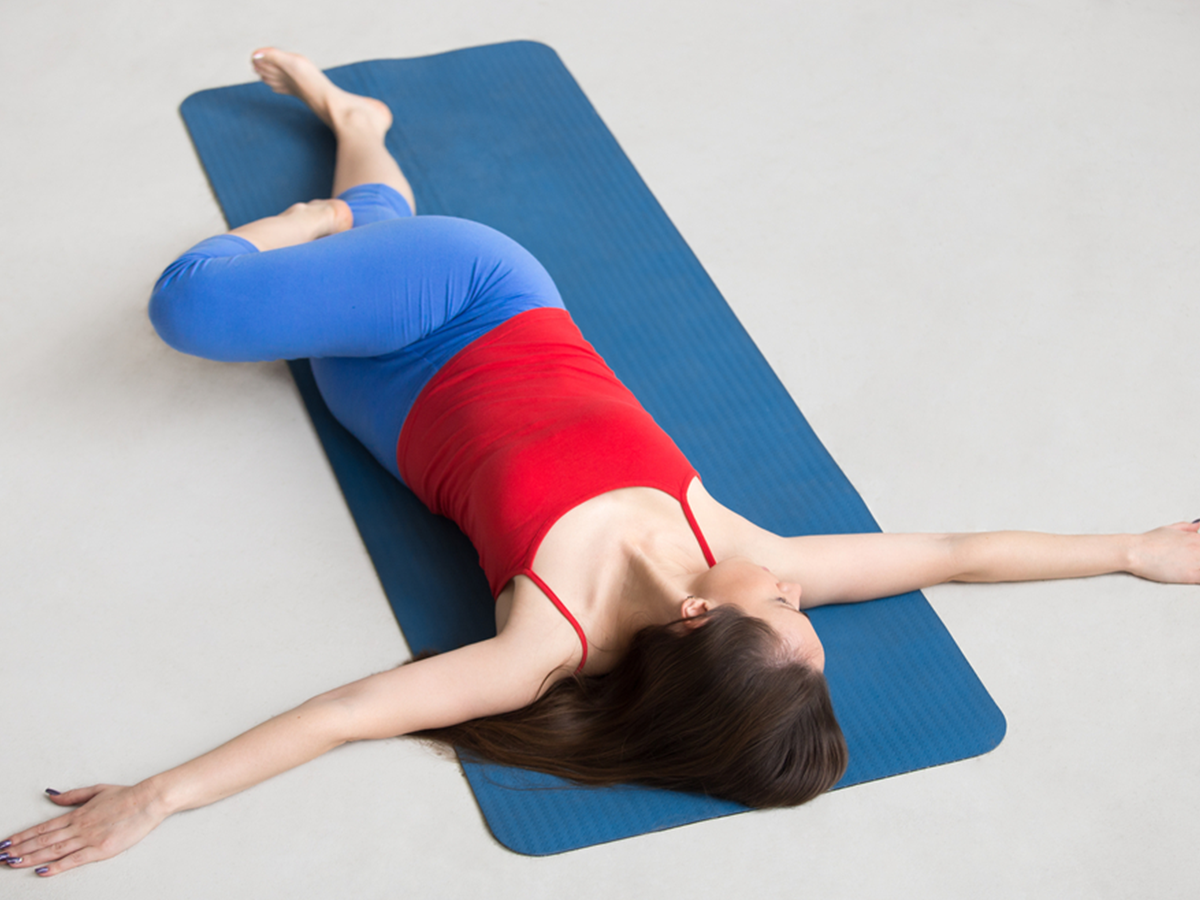Post-workout stretches are essential for muscle recovery and better performance. There are a few side stretches that help in the recovery of core and oblique muscles effectively. Skipping stretches could cause injuries and sore muscles. To achieve better results, here is a guide to practise four effective side stretches.
How side stretches help in post-workout recovery

Shutterstock
Side stretches can be beneficial for post-workout recovery in several ways. Here’s an explanation of how side stretches help in post-workout recovery,
1. Increased flexibility and range of motion
• Side stretches target the muscles along the sides of your body, including the obliques and core.
• Performing these stretches after a workout helps improve flexibility and increase your range of motion in these areas.
• Increased flexibility can enhance your overall athletic performance and reduce the risk of injuries.
1. Muscle relaxation and tension release
• Intense workouts can cause muscle tightness and tension, particularly in the core and oblique muscles.
• Side stretches help release this tensionand promote muscle relaxation by elongating and stretching the targeted muscles.
• This relaxation aids in reducing muscle soreness and promoting a faster recovery process.
2. Improved circulation and blood flow
• Side stretches involve lengthening and elongating the muscles, which encourages blood flow to the targeted areas.
• Improved circulation helps deliver oxygen and nutrients to the muscles, aiding in their repair and recovery.
• It also assists in removing metabolic waste products that accumulate during exercise, such as lactic acid, which can contribute to muscle soreness.
1. Posture correction and alignment
• Consistently incorporating side stretches into your post-workout routine can help improve your posture and alignment.
• Side stretches target the core and oblique muscles, which play a significant role in stabilising the spine and maintaining proper posture.
• By stretching and strengthening these muscles, you can correct imbalances and promote a more aligned and upright posture.
1. Relaxation and stress relief
• Doing side stretches after a workout provides an opportunity for relaxation and stress relief.
• Deep breathing and mindful stretching can help calm the nervous system, reducing post-workout stress and tension.
• This relaxation response promotes overall well-being and aids in the recovery process by allowing the body to enter a state of rest and repair.
4 Effective side stretches for post-workout recovery
1. Side Bend Stretch

Shutterstock
To practise the Side Bend Stretch for post-workout recovery, follow these steps:
1. Stand with your feet hip-width apart, keeping your spine tall and your core engaged.
2. Raise one arm overhead, extending it fully and keeping it straight. Your palm should be facing inward, and your bicep should be close to your ear.
3. Slowly begin to lean your upper body to the opposite side of the raised arm. Keep your hips stable and avoid leaning forward or backward.
4. As you lean, focus on elongating the side of your body that is being stretched. You should feel a gentle stretch along the oblique muscles and the entire side of your torso.
5. Hold the stretch for 20-30 seconds while maintaining deep and steady breathing. Allow your body to relax into the stretch, but avoid overstretching or straining.
6. Return to the starting position by slowly bringing your raised arm back down to your side.
7. Repeat the stretch on the other side by raising the opposite arm overhead and leaning in the opposite direction.
8. Perform 2-3 sets of the Side Bend Stretch on each side, allowing your body to gradually adapt to the stretch.
Tips:
• Make sure to keep your shoulders relaxed and away from your ears throughout the stretch.
• Engage your core muscles to stabilise your spine and maintain proper alignment.
• You can intensify the stretch by slightly bending your torso to the side as you lean or by holding onto a light dumbbell or resistance band in the raised hand.
• If you have any pre-existing injuries or medical conditions, consult with a healthcare professional before attempting this stretch to ensure it is suitable for you
2. Standing Side Reach

Shutterstock
To practise the Standing Side Reach for post-workout recovery, follow these steps:
1. Stand with your feet shoulder-width apart, keeping your spine tall and your core engaged.
2. Interlace your fingers above your head with your palms facing upward. Extend your arms fully.
3. Take a deep breath in, and as you exhale, begin to slowly reach up and over to one side. Imagine lengthening the entire side of your body.
4. Maintain a strong and stable core throughout the movement. Avoid bending forward or backward as you reach.
5. Feel the gentle stretch along the side of your body, particularly in the oblique muscles and the entire torso.
6. Hold the stretch for 20-30 seconds while maintaining relaxed and controlled breathing.
7. Return to the starting position by slowly bringing your arms back down to your sides.
8. Repeat the stretch on the other side by interlacing your fingers above your head and reaching up and over in the opposite direction.
9. Perform 2-3 sets of the Standing Side Reach on each side, allowing your body to gradually adapt to the stretch.
Tips:
• Keep your shoulders relaxed and away from your ears throughout the stretch.
• Engage your core muscles to maintain stability and proper alignment.
• You can modify the stretch by using a yoga strap or towel to hold onto with both hands for assistance if reaching overhead is challenging.
• If you experience any pain or discomfort, adjust the range of motion and intensity of the stretch to a level that feels comfortable for you.
• Consult with a healthcare professional if you have any underlying medical conditions or injuries to ensure this stretch is suitable for your needs.
3. Seated Side Stretch

Shutterstock
To practise the Seated Side Stretch for post-workout recovery, follow these steps:
1. Sit on the floor with your legs extended straight in front of you.
2. Cross one leg over the other, placing the foot on the floor outside the opposite knee. The bent knee should be pointing upward.
3. Place the opposite hand on the floor behind you, supporting your weight and keeping your spine tall.
4. Inhale deeply and, as you exhale, slowly twist your torso toward the bent knee. Use your opposite hand to gently press against the outside of the bent knee for a deeper stretch.
5. As you twist, feel the stretch along the side of your body, particularly in the oblique muscles and the waist.
6. Hold the stretch for 20-30 seconds while maintaining steady breathing.
7. Slowly release the twist and return to the starting position.
8. Repeat the stretch on the other side by crossing the opposite leg over and twisting in the opposite direction.
9. Perform 2-3 sets of the Seated Side Stretch on each side, allowing your body to gradually adapt to the stretch.
Tips:
• Keep your spine tall and avoid slouching during the stretch.
• Engage your core muscles to stabilise your spine and maintain proper alignment.
• If the seated position is uncomfortable, you can sit on a folded blanket or cushion to provide some elevation and support.
• Be gentle and avoid forcing the stretch. Let gravity and your breath help you ease into the twist gradually.
• If you have any existing back or spine issues, consult with a healthcare professional before attempting this stretch to ensure it is suitable for your condition.
4. Supine Spinal Twist

Shutterstock
To practise the Supine Spinal Twist for post-workout recovery, follow these steps:
1. Lie down on your back on a comfortable surface, such as a yoga mat or carpet.
2. Extend your arms out to the sides, forming a T-shape, with your palms facing down.
3. Bend your knees and bring them up towards your chest.
4. Lower your legs to one side of your body, allowing your knees to rest on the floor or mat. Keep your upper back and shoulders anchored to the ground.
5. Gently turn your head in the opposite direction of your bent knees, facing the arm that is extended away from your legs.
6. Feel the stretch along your spine and the entire length of your back. You may also feel a stretch in your oblique muscles.
7. Hold the stretch for 20-30 seconds, focusing on deep and relaxed breathing.
8. Slowly bring your legs back to the centre, returning to the starting position.
9. Repeat the stretch on the other side by lowering your legs to the opposite side and turning your head in the opposite direction.
10. Perform 2-3 sets of the Supine Spinal Twist on each side, allowing your body to gradually adapt to the stretch.
Tips:
• Keep your shoulders grounded and relaxed throughout the stretch.
• Engage your core muscles to maintain stability and support your spine.
• If your legs do not reach the floor comfortably, you can place a cushion or bolster beneath them for support.
• Adjust the depth of the twist based on your comfort level. Do not force the twist beyond what feels comfortable for your body.
• If you have any pre-existing back conditions or injuries, consult with a healthcare professional before attempting this stretch to ensure it is suitable for your needs.
Special Story [widgetId: 19493]
Social and lead images credits: Zee Studios / White Feather Films, Viiking Media & Entertainment




